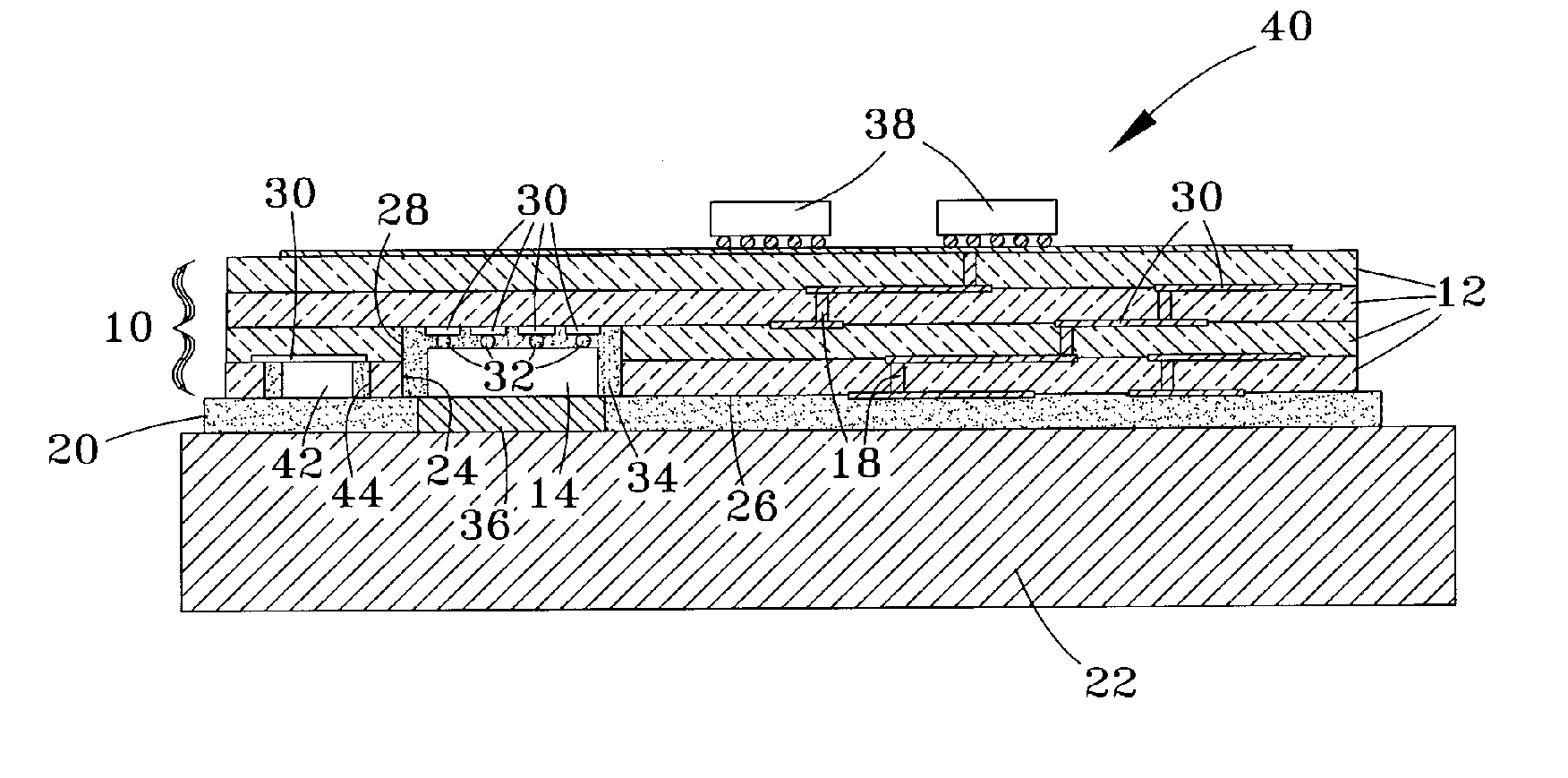Thermal management of surface-mount circuit devices
a surface-mount circuit device and thermal management technology, applied in the direction of printed circuit aspects, electrical apparatus construction details, printed circuit association, etc., can solve the problems that the thermal management of metal-containing ceramic layers cannot be improved by the use of metal-containing ceramic layers, and the ltcc substrate is also electrically conductive, etc., to achieve the effect of improving thermal managemen
- Summary
- Abstract
- Description
- Claims
- Application Information
AI Technical Summary
Benefits of technology
Problems solved by technology
Method used
Image
Examples
first embodiment
[0014]FIG. 2 depicts a circuit board assembly 40 in which a power flip chip 14 is mounted on a low-temperature co-fired ceramic (LTCC) substrate 10 in accordance with the present invention. While a circuit board assembly comprising an LTCC substrate 10 is preferred, the use of other laminate substrates, for example, organic circuit board substrate materials such as FR-4, is also within the scope of this invention.
[0015] As an LTCC, the substrate 10 is a monolithic structure made up of multiple ceramic layers 12 bonded to each other, with thick-film conductors 30 located within the substrate 10 between adjacent layers 12. As with known LTCC processes, the substrate 10 is fabricated using individual green tapes on which the thick-film conductor pastes are deposited which, after stacking and firing at a temperature of, for example up to about 900° C., form the ceramic layers 12 and conductors 30, respectively. Other passive circuit components, such as resistors and capacitors, may also...
second embodiment
[0023]FIG. 3 depicts a circuit board assembly 50 in accordance with the invention in which, for convenience, corresponding components are identified with the same reference numbers as those used in FIG. 2. As such, a power flip chip 14 is mounted on an LTCC substrate 10 made up of multiple ceramic layers 12. The embodiment of FIG. 3 primarily differs from FIG. 2 by its location of the cavity 24 within the heat sink 22 instead of the substrate 10. Multiple solder bumps 32 on the active frontside of the chip 14 electrically and physically attach the chip 14 to conductors 30 on the surface 26 of the substrate 10. The non-active backside of the chip 14 may be bonded to the bottom of the cavity 24 with solder (not shown) or a portion of the adhesive 20 that bonds the heat sink 22 to the substrate 10. An advantage of this embodiment is that heat transfer occurs vertically from the chip 14 to the heat sink 22, as well as laterally into the heat sink 22 through the walls of the cavity 24.
[0...
PUM
 Login to View More
Login to View More Abstract
Description
Claims
Application Information
 Login to View More
Login to View More - R&D
- Intellectual Property
- Life Sciences
- Materials
- Tech Scout
- Unparalleled Data Quality
- Higher Quality Content
- 60% Fewer Hallucinations
Browse by: Latest US Patents, China's latest patents, Technical Efficacy Thesaurus, Application Domain, Technology Topic, Popular Technical Reports.
© 2025 PatSnap. All rights reserved.Legal|Privacy policy|Modern Slavery Act Transparency Statement|Sitemap|About US| Contact US: help@patsnap.com



